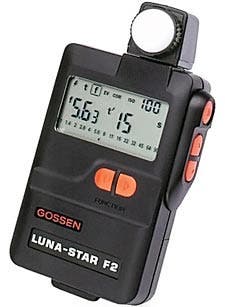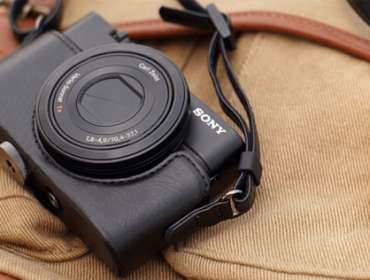Some photographers think studio lighting equipment is too complicated and too expensive but it can be neither. Part of this misunderstanding is created by seemingly bewildering array of product types and their associated buzzwords. Here’s a look at AC & DC Power Packs and heads
Divide and conquerMonolights combine power supply and flash head into a single unit. An alternative approach is to separate the power supply and flash into two separate units–the AC power pack and flash head. Because there is no internal power supply, flash heads can be smaller; some are downright tiny, allowing you to place them in locations where larger monolights might not fit. Since the heads are smaller, there’s room for adding cooling fans without the head size getting too large or the fan too big and noisy.A separate, single-unit power supply can control more than one head. Usually the output for each flash is controlled separately in either symmetric (all flashes operate at the same power output) or asymmetric (each flash output is controlled independently) configurations. The power supply itself can be larger because the design needn’t be concerned as much about heat buildup affecting the flash head (as with a monolight) allowing more flash heads to be connected along with overall higher Watt Second output. A ratio approachIf some of these buzzwords are new to you, be sure to read part I of this series, “What are Monolights?” which contains a glossary of terms for those new to the world of studio lighting. One of the terms you won’t find there is lighting ratio and that’s especially important when using multiple flash heads. Power packs with asymmetric controls can be set so each flash connected has a different output intensity. Lighting ratio is the difference in the brightness of light falling on your subject from the main (sometimes called key) light and the other fill light, but there can also be tertiary lights that serve other purposes such as adding highlights to the subject’s hair (hair light) or illuminating the background (background light.) A ratio of 3:1 is considered “standard” or normal for color photography but photographers can be flexible in applying this rule.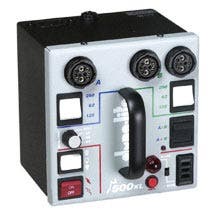 Dyna-lite M500XL is the company’s smallest power pack. It produces 500-Watt Seconds of flash power with a five f-stop range and a Variator to provide 1/3 stop fine-tuning to three flash heads. It weighs only 4.2 pounds, has a footprint of just 5 5/8×5 7/8 inches, and stands only 5 1/4 inches high including the handle.Like Monolights, power packs have input for a PC cable allowing it to be directly triggered when connected to your SLR’s corresponding PC outlet. Many have an optical “slave” that can be set to trip the flash when it sees another flash go off or may be triggered by an infrared source. Radio-controlled slaves are a popular option that allows a power supply to be wirelessly triggered without requiring a camera-mounted flash or cable connection. Some power packs, such as the Dyna-lite M-1000WI, have a built-in radio receiver. Dyna-lite M500XL is the company’s smallest power pack. It produces 500-Watt Seconds of flash power with a five f-stop range and a Variator to provide 1/3 stop fine-tuning to three flash heads. It weighs only 4.2 pounds, has a footprint of just 5 5/8×5 7/8 inches, and stands only 5 1/4 inches high including the handle.Like Monolights, power packs have input for a PC cable allowing it to be directly triggered when connected to your SLR’s corresponding PC outlet. Many have an optical “slave” that can be set to trip the flash when it sees another flash go off or may be triggered by an infrared source. Radio-controlled slaves are a popular option that allows a power supply to be wirelessly triggered without requiring a camera-mounted flash or cable connection. Some power packs, such as the Dyna-lite M-1000WI, have a built-in radio receiver.
The Norman 1200 Watt Second AC Power Supply with Tone Light Control can be ordered with a factory set TLC mode to control the fill light, or the main and fill in either two or three output levels. A switch on the power supply allows all 1200 Watt Seconds to be used on a single light head. PortabilityThe option of having a DC power pack allows you to take your flash system out into a cornfield or a racetrack to create real studio lighting in the middle of nowhere. This is also where you will run into the second downside of power pack/heads: cables. You’ll need to run a cable from the power pack to each head to make it all work. This isn’t a big deal in the studio, where you can tape them down or place them safely under cable runs, but on location, watch where you walk. Knocking over a light stand and flash head almost always results in a disaster, and it’s expensive, too.
The Gossen Luna-Star F2 is a digital incident, reflected, and flash meter. Both flash and available light are measured at the same time, so it’s easy to determine the balance between the two. (That’s another lighting ratio you need to consider when working under high ambient light.) This is the meter that I personally use and other than the fact that it uses the dreaded 9-volt batteries so beloved of German engineers, it’s been a real workhorse for many years.
Joe Farace is the author of a new book called “Getting Started in Digital Imaging” published by Focal Press (ISBN 024080838X.) It’s available in all the best bookstores as well as Amazon.com. |

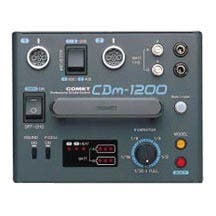
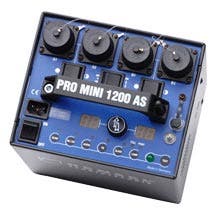
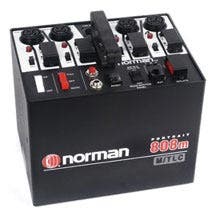
 The
The 